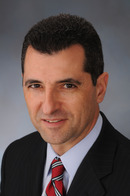Angry TradeTech delegates clash over HFT
A session at TradeTech’s HFT Focus Day in London fell into chaos, as furious delegates hurled accusations across the table and members of the audience sparred aggressively with panellists.
The highly charged panel, in which participants discussed the possibility of an industry-wide code of conduct for HFT, had to be swiftly adjourned by chairman Dave Cliff, former member of the UK government’s Foresight project into automated trading, as the debate spilled into overtime.
At the centre of the argument was a clash between Joseph Saluzzi, co-founder of buy-side firm Themis Trading, and Manoj Narang, founder and chief executive at high-frequency trading firm Tradeworx. Moments into the session, Saluzzi expressed his concern about who would pay for the cost of monitoring financial markets against the potential for market abuse that HFT strategies may or may not have created.
“In a capitalist society, we should not be expecting equal outcomes,” responded Narang. “There will always be winners and losers. The winners will likely be the same high-frequency players as today. That’s how skill works.”
While panellists Niki Beattie, founder at Market Structure Partners, and Tobias Pries, founder and chief executive at buy-side firm Artemis Capital, attempted to maintain a sense of calm in the debate, their efforts could not calm the rising tension between the other panellists.
“Why should I pay for somebody else’s system that needs to be monitored? Shouldn’t the one using that system pay more?” asked Saluzzi. “The market is dominated by scalpers – they are front running in all but name. These people are paying lip service to the rules and getting away with it.”
The flames really took hold when Benoit Lallemand, senior research analyst at European think tank Finance Watch, asked what value intermediaries such as HFTs bring, when they only provide liquidity to markets that are already highly liquid. “SMEs and small cap stocks contribute the most to the real economy, and that’s where we are lacking liquidity,” he said. “We need to restore trust in financial markets. HFTs are just coming between the end user and adding cost.”
“The notion that HFT only provides liquidity to liquid stocks is absurd,” countered Narang. “It’s preposterous. All liquidity providers do is post bids and offers. Buy side investors are the ones that decide volumes. If HFTs could decide how much volume they want to do, there would be more and more volume, not a decline. The reason illiquid stocks are illiquid is because there’s not enough demand for those stocks.”
A shouting match then ensued between Saluzzi and Narang, with Saluzzi contending that liquidity in small cap stocks is usually found in dime increments at best, and Narang insisting that there are 3,000 US stocks that trade at penny increments. At this point, an audience member who identified himself as a representative of Northern Trust weighed into the debate, angrily coming down on the side of Saluzzi and the long-term investor.
“Joe is suffering from market abuse,” he said. “I’d rather people like you weren’t there, Manoj. But I also believe in free markets, so I accept your right to do business. My question is, why have a market maker at all in an order driven system? Market makers should not get rebates nor any preferential treatment on a central limit order book. That would make a much more equal market.”
The debate over HFT has become a fixture of virtually all discussion on capital markets in recent years, with opinions sharply divided between those who see HFT as a positive contributor to liquidity and narrower spreads, and those who see HFTs as nothing more than parasites and “vultures”, sucking value away from the long-term investor and sapping the life from the real economy.
In various European countries including France, Italy and Germany, separate measures have been adopted in an attempt to control HFT participation and its effects on capital markets. France introduced a financial transaction tax; Italy introduced charging for firms that cancel more than a set proportion of their orders; and Germany is planning to impose minimum tick sizes and order to trade ratios. Similar measures are also contained in the European Commission’s proposed MiFID II document, which is due to take effect in 2015/16.
Earlier this month, Germany’s Eurex posted a series of videos, in which it explored the positive aspects of HFT and argued that HFT adds valuable liquidity to its order book. The video can be seen here.












































